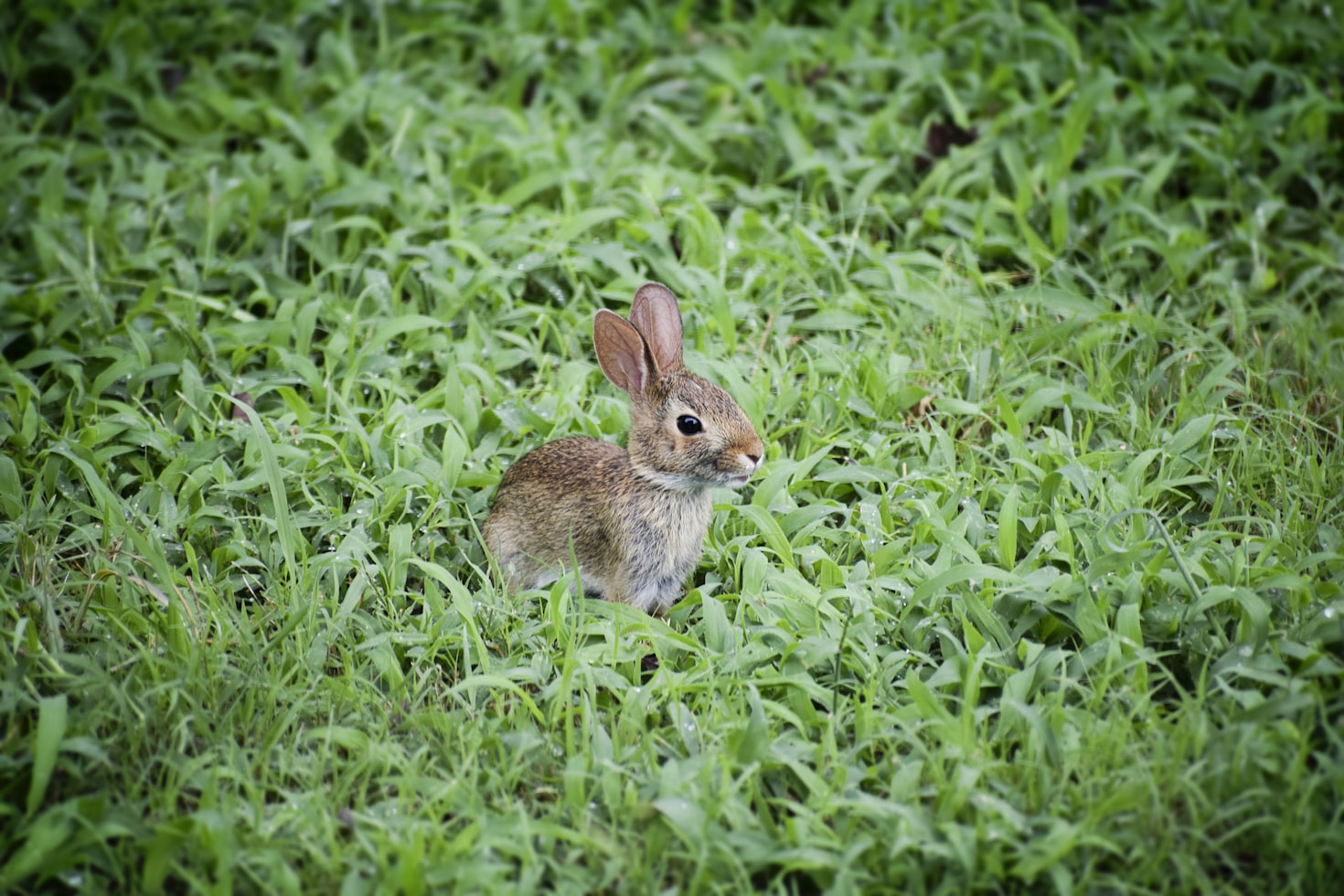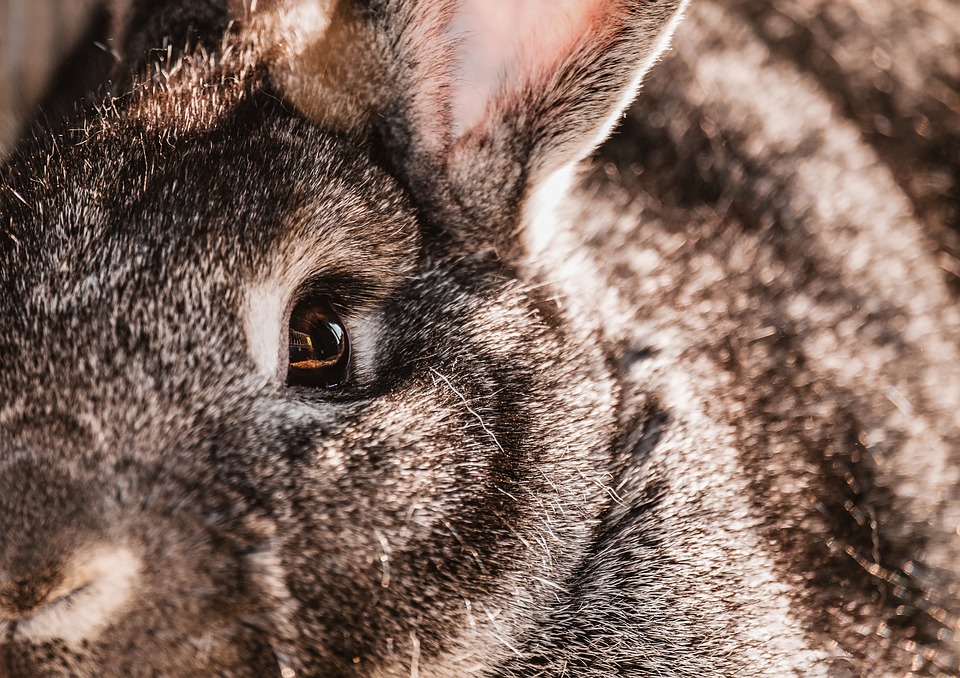Looking for fun facts about rabbits? Then you’ve come to the right place!
Rabbits are some of our most favorite companions. Not only are they adorable, but they can be very cuddly and loving, and a lot of fun to be around! Rabbits are also very interesting creatures, with a ton of quirky and interesting facts about them that many people don’t know. Read on below to find out 10 fun facts about your favorite cotton-tailed friends.
1. Female and male rabbits have the same names as female and male deer.
Although rabbits and deer are wildly different animals (although they might be friends in cartoons), they have quite similar names! An adult female rabbit is called a doe, exactly like female deer. An adult male rabbit is called a buck, exactly like a male deer, but without the antlers!
Baby deer and baby rabbits have entirely different names. A baby deer is called a fawn, but a baby rabbit is called a kit or a kitten! A group of rabbits, composed of any number of does, bucks, or kittens, is called a herd.

2. One single rabbit can have as many as 168 baby rabbits in a year!
The saying “multiplying like rabbits” wasn’t invented for nothing! Rabbits can start reproducing as early as 3 months old, and their gestation period is only 30 days maximum. With each pregnancy, rabbits can give birth to up to 14 kits and can get pregnant not long after giving birth.
If a rabbit gave birth to a litter every month, with the maximum number of kits per litter, a rabbit could have up to 168 kits per year. However, this is extremely uncommon, and not actually very healthy; most breeding rabbits safely have around 4 litters per year.

3. Rabbits can see almost 360 degrees.
Unlike dogs and cats who have forward-facing eyes, rabbits’ eyes are positioned on the sides of their heads. Their eyes are also quite high on their skull, closer to their ears than other animals. Because of the placement of their eyes, rabbits can see just under 360 degrees around them.
Have you ever tried to sneak up on a rabbit in your yard to get a closer look? Even though you might have been behind them, rabbits only have one blind spot, and that’s right in front of their face. This is to make sure that can see predators from any direction, including in the air above their heads!

4. Rabbits eat their own droppings for nutrients!
Rabbits get nutrients from the food they eat, just like other animals, humans included! However, rabbits often get two rounds of nutrients from the food they eat. The first round of nutrients are digested regularly by eating food, and the second round is digested by eating their own droppings!
Rabbits have two types of droppings: one is actual waste, and the other is called cecotropes. Cecotropes, or “night droppings” are soft, black droppings that rabbits eat, giving their digestive system an opportunity to absorb any nutrients that were missed the first time. Some rabbits eat more or less of their cecotropes depending on how much protein is in their diets.

5. The front teeth of rabbits never stop growing.
Rabbit’s big front teeth are one of their most iconic features. But, did you know that these two giant teeth actually never stop growing? The top and bottom front teeth of rabbits rub together to wear them down, much like how you file your nails to keep them a good length.
Rabbits’ non-stop growing teeth is actually an evolutionary adaptation to their natural diets. Typically, rabbits’ diets consist of woody plants that are extremely fibrous. These types of foods would naturally wear down rabbit teeth. As rabbits’ diets have changed over time, so have their teeth, eliminating the need for tooth maintenance from their diet!

6. Rabbits “binky” when they’re happy.
Many animals have a way to show humans that they’re happy, whether it’s a tail wag or a purr. Although rabbits can actually purr in a way similar to a cat, their number one way to show us their happiness is called a binky.
A binky is a combination of movements; a jump, a twist, and a spin. A full binky looks like a big leap with a body and head twist in opposite directions. Your rabbit may take a running start to this, or just do it in one spot. A half binky is a head twitch that makes the rabbit’s ears wiggle but isn’t accompanied by a body twist. The safer and happier your rabbit is, the more they will binky!

7. The highest recorded rabbit jump is over 3 feet!
We know that rabbits are excellent jumpers, but just how high can they jump? In one single jump, rabbits can reach up to 0.91 meters in height. The Guinness World Record for highest rabbit jump in the world was completed by a black and white rabbit called Mimrelunds Tösen in 1997. This rabbit jumped a whopping 0.99 meters in the air! Rabbits can also jump quite far, reaching distances of about 3.05 meters in front of them.

8. Rabbits’ ears help rotate and help keep them cool.
Rabbits’ big and sometimes floppy ears are adorable but also serve multiple important functions in their day-to-day lives. One of these functions is, of course, listening. With a 270-degree ear rotation, rabbits are able to hear up to 3.22 kilometres away from them. This is incredibly important for rabbits in the wild to avoid predators!
Thes second function of rabbits’ ears is to keep them cool in the heat. Because of the large surface area of rabbit ears, there is more opportunity for heat to escape, cooling down the rabbit in the sun. The blood vessels in rabbits’ ears can also regulate their body temperature by contracting when it’s cold, and opening up when it’s hot.

9. There are over 300 different breeds of rabbits.
You probably have a very specific idea of what a rabbit looks like – small, brown, white cottontail, and tall pointy ears. What you’re likely picturing is a Cottontail rabbit, one of over 300 different breeds!
Rabbits come in all kinds of shapes, sizes and colors. Some have tall ears, some have floppy ears, some are giant, and some are little. Common breeds, in addition to the Cottontail that so many of us are familiar with, including American Rabbits, Belgian Hare Rabbits, Blanc de Hotot, and Holland Lop Rabbits, to name a few.

10. The heaviest rabbit in the world was 55 pounds.
Although not all rabbits can get this big, certain breeds like the Continental Giant can grow to be the weight of a medium-sized dog. Ralph, a Continental Giant from the UK, broke the Guinness World record for “Worlds Largest Bunny Rabbit” in 2010. Ralph weighed in just shy of 55 pounds — the weight of an average bulldog.
Flemish Giants are actually the largest rabbit breed in the world, but typically weigh in at around 25 lbs; that’s how you can tell just how giant Ralph was!
Rabbits are much more than our button-nosed best friends, they’re actually very intriguing animals! With abnormal eyesight, incredible jumping distances, and interesting waste habits, there is so much more than meets the eye with these animals.

References
10 Hopping Fun Rabbit Facts! (n.d.). National Geographic Kids. https://www.natgeokids.com/uk/discover/animals/general-animals/10-hopping-fun-rabbit-facts/
Carter, Lou. (2021). Why Do Rabbits Binky? (Binkying Explained). Rabbit Care Tips. https://www.rabbitcaretips.com/why-do-rabbits-binky/
Debczak, Michele. (2018). 14 Fascinating Facts About Rabbits. Mental Floss. https://www.mentalfloss.com/article/557234/facts-about-rabbits
Fun Facts About Rabbits. (2019). Columbus Humane. https://www.columbushumane.org/the-wag/2019/2/20/fun-facts-about-rabbits
Highest jump by a rabbit. (n.d.) Guinness World Records. https://www.guinnessworldrecords.com/world-records/highest-jump-by-a-rabbit
House Rabbit Society. (2013). Disorders of the Cecum. House Rabbit Society. https://rabbit.org/disorders-of-the-cecum/
Interesting Facts About Rabbits (n.d.). MPSCA Angell. https://www.mspca.org/pet_resources/interesting-facts-about-rabbits/
Jones, Jennfer. (2020). 10 Largest Rabbit Breeds in the World. Largest. https://largest.org/animals/rabbit-breeds/
Krempels, Dana M. (1998). What Do Rabbits See? H.A.R.E., Inc. http://www.bio.miami.edu/hare/vision.html
Nosowitz, Dan. (2017). 15 Weird Things You Never Knew About Rabbits. Modern Farmer. https://modernfarmer.com/2017/03/15-weird-things-never-knew-rabbits/
Rabbit Litters Per Year – 168 babies per year! (n.d.) Rabbit Pros. https://rabbitpros.com/rabbit-litters-in-a-year/
Ralph, World’s Largest Bunny Rabbit, Weighs 55 Pounds and Eats $90 of Food A Week. (2013). Huffpost. https://www.huffpost.com/entry/ralph-worlds-largest-bunny-rabbit_n_3006487
Types of Rabbits — Complete List and Guide 2021. (n.d.). Northern Nester. https://northernnester.com/types-of-rabbits/
Ward, Jamie. (2021). 19 Interesting Facts About Rabbits. The Fact Site. https://www.thefactsite.com/facts-about-rabbits/
